
When selecting a recipe, I decided to pick something that I was fairly confident would turn out the way it was meant to. I wanted to keep it as authentic as possible. Since I often use potatoes when cooking and I like making soup, I decided potato soup was a safe bet.
The recipe:
Potato Soup
- 1½ lb potatoes.
- 1 stick celery, a few spring onions, or a little leek.
- 2 tablespoonfuls chopped parsley.
- 1¾ pints of vegetable water or water.
- 1 teacup of milk or household milk.
- Seasoning.
Method-Scrub and slice the potatoes and celery. Place in boiling salted water. Cook with the lid on until quite soft. Rub through a sieve or mash well with a wooden spoon. Add milk and re-heat, but do not re-boil. Sprinkle in coarsely chopped parsley just before serving.
The first thing that I had to do was gather the ingredients:
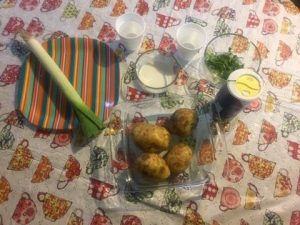
I wanted to use ingredients that I had not used before, so I chose to use leak instead of celery. Unfortunately, I had a little trouble locating vegetable water, so I had to settle for regular water.
Then I prepared the ingredients. Normally, I peal potatoes whenever I cook, but the recipe says to scrub them. Also, a hint on how to cook potatoes during WWII was to “always keep the skin on.” As I worked on the potatoes, I imagined how wasteful it would be to peel the potatoes when food is being rationed. After I thoroughly scrubbed the potatoes, I sliced the leak:
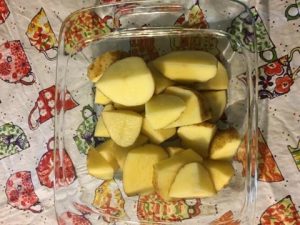

Then I added them into boiling salted water:
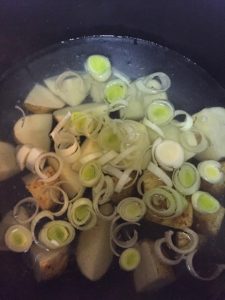
After 15 minutes of boiling with the cover on, I took the potatoes out of the pot. At that point, there was no reason to think the outcome would be what it turned out to be. There was a pleasant aroma coming from the boiling potatoes and leak. I thought, for a moment, that it would actually be tasty…
I then mashed the potatoes with a wooden spoon:

I added the milk and I reheated, but did not let it boil. Then I placed the soup into a bowl and sprinkled coarsely chopped parsley into it.
THE FINISHED PRODUCT
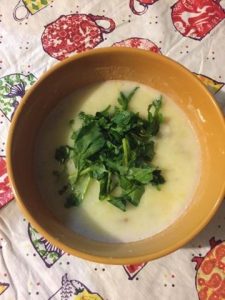
It did not look bad, and it actually smelled okay. I was ready to taste it right away, but my nephew, who had been watching the whole process, decided that he would be the first person to taste it. He took a big spoonful…

and then…

It took him a long time to actually swallow the soup. I thought that his reaction was a little dramatic so I tried it myself. It was the worst thing I ever cooked. It tasted grainy, moist, milky, and disgusting. My niece tried it as well. She is a vegetarian, but she said that she would rather eat meat than eat that again.
Luckily, the meal was not a complete waste. It opened up a discussion about how people must have lived during wartime. They could not be picky when it came to food. They ate the potato skins on their potatoes. They ate to fill their stomachs not to satisfy a craving, or to enjoy the taste. After all, they had more important things to worry about.
My nephew, while playing with the abandoned potato soup, was only able to add one thing to the conversation: “poor war people.”
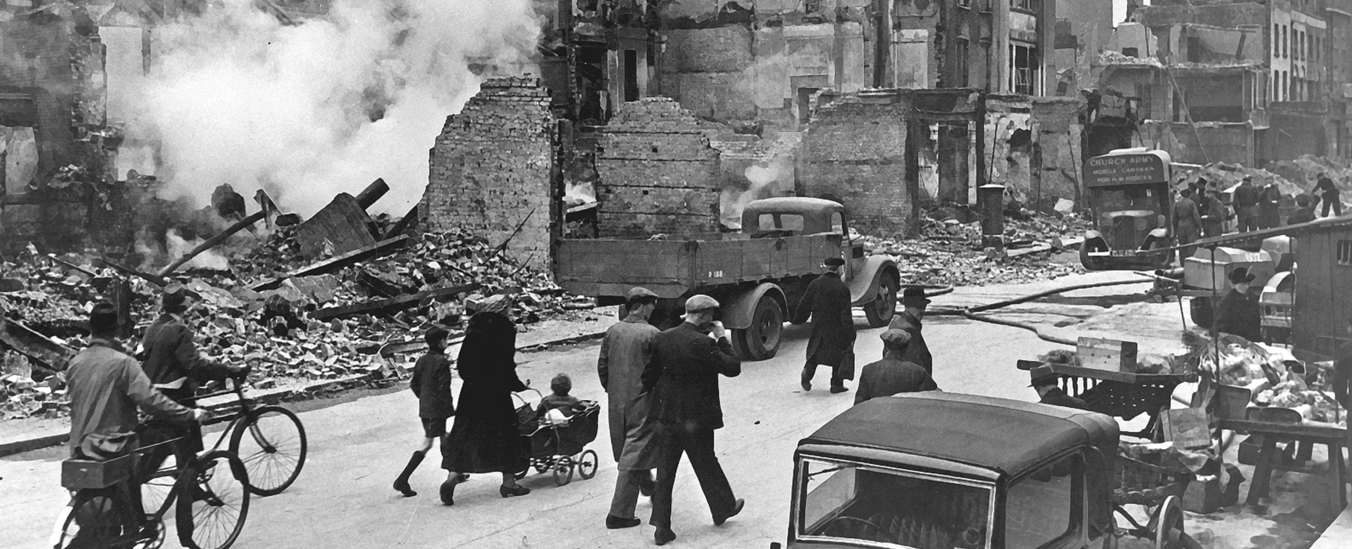
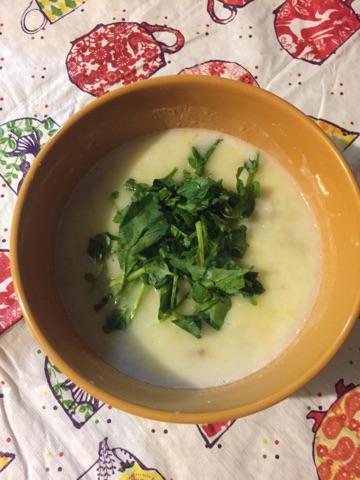
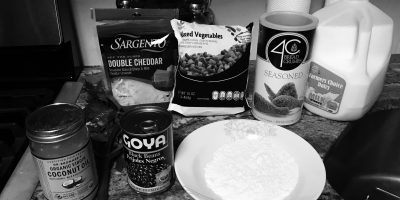
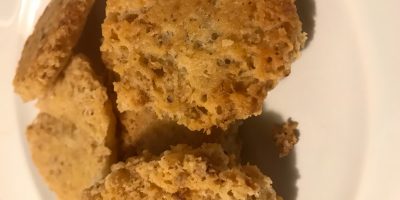
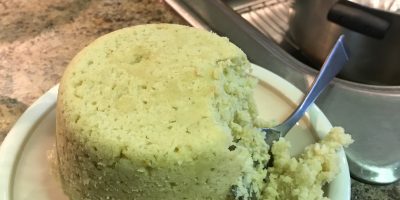


Melissa Dinsman
Dear Claudia,
I’m please to see you got your family involved and that your nephew was willing to try the food. I think a couple things could have helped the taste of this recipe. One would have been using vegetable water (or as you find it today, vegetable stock) instead of just water. This would have added a bit of thickness and flavor. Another thing would have been to add more salt. I liked that you used the leak, which was a very common food in the 1940s (and one I find particularly tasty with potatoes.) I am also pleased to see this cooking experience led to some reflection on food necessity. It is true that today we have a lot more choice and food is cheaper; this makes our wasting food (like potato skins) go more unnoticed. The skins, though, are full of vitamins, so they definitely would have been kept on, so good choice there!
Isamar Perez Santiago
OMG, the picture of your nephew is priceless! And for a vegetarian to say that they would prefer to eat meat says a lot!